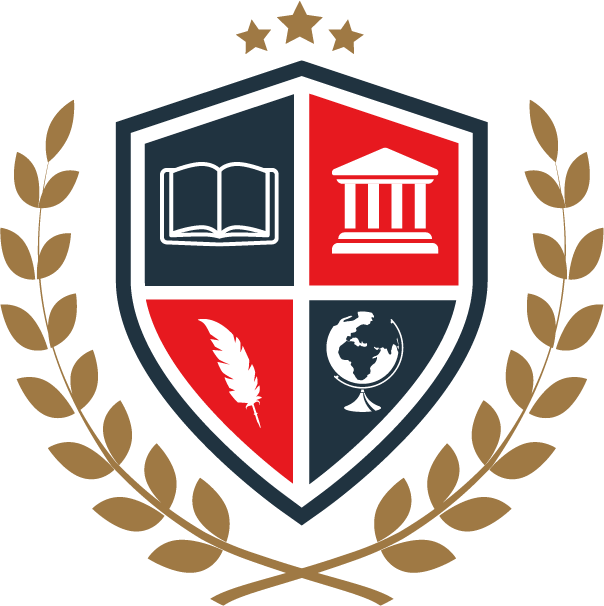
Presbyterian ministers were the rock stars of the American Revolution. The role the Presbyterian Church played in the American Revolution is indisputable. King George III called the revolution a “Presbyterian war,”[1] exclaiming once of the revolutionaries, “Are they not Presbyterians?”[2] (indeed, it is estimated that by the end of the war, more than half of all the American officers and soldiers in the Continental Army were Presbyterians).[3] Horace Walpole, after hearing the news of the American Revolution, told the House of Commons, “There is no good crying about the matter. Cousin America has run off with the Presbyterian parson, and that is the end of it.”[4] The “parson” about whom Walpole was referring was John Witherspoon – president of the College of New Jersey (Princeton University today) and one of the signers of the Declaration of Independence. He was also a Presbyterian minister.
The patriot cause became the Presbyterian cause. Under ministers John Ewing and Francis Alison, the First Presbyterian Church of Philadelphia became known as the “cathedral of democracy.”[5] Delaware minister Matthew Wilson named his son, James Patriot Wilson.[6] Joseph Montgomery preached a political fast day sermon at the College of New Jersey.[7] Pennsylvania minister Gilbert Tennent signed a circular letter, advocating non-support for the Quakers’ attempt to undercut the independence movement in their colony. He also joined ministers George Duffield and James Sproat in sermonizing against the British closing of the port of Boston.[8] These ministers joined Pennsylvania minister Robert Davidson in dispatching a letter to the Minister of the Presbyterian congregations in North Carolina justifying colonial resistance to Great Britain, warning them that “We can have no fellowship with you…nor will we be able to any longer number you among our friends if the North Carolina Presbyterians cannot unite their forces, fight when driven to it, support non-importation and non-exportation resolutions, and back the Continental Congress.”[9]
In a letter to his wife, John Adams wrote, “the Presbyterian clergy engage in politics…with a fervor that will produce wonderful effects.”[10] Thomas Jefferson noted that “the Presbyterian spirit is known to be so congenial with friendly liberty.”[11] Loyalists in New Jersey and Pennsylvania attributed the rebellion to the “damned, hot-headed Presbyterians who were aiming at independence,”[12] labeling them a “dangerous combination of men, whose principles of religion and polity were equally averse to those of the established Church and Government of Great Britain.”[13] Samuel Davies, a Presbyterian minister in Virginia, impacted the revolutionary firebrand Patrick Henry with his sermons castigating “monarchs, masters, and magistrates who neglected to do what was conducive to the public good,”[14] inviting God’s “vengeance and destruction on their sinful and tyrannical governments,”[15] saying “when nations corrupt their ways, when they sink into bribery, corruption and irreligion, their ruin is approaching and God will fall against them and destroy them.”[16] It was Davies and the rest of the Presbyterian clergy’s belief that “revolutions represented the resettlement of God’s Law.”[17] Minister George Duffield even compared the Egyptian Pharaoh of the Exodus story to King George III, linking the fates of Israel and America together.[18]
On a personal note, having now studied the Great Awakenings (1 & 2), the evangelical movement of the Second Great Awakening, and religion’s impact on America’s founding, I find myself less and less interested in theology – the theoretical underpinnings of various denominations – and more interested in the tangible denominational contributions to America’s founding and education. The Presbyterians are at the center of both, having established the College of New Jersey and participated in America’s independence movement, revolution, and founding documents. Looking around, it makes me question, where are today’s Presbyterians? (Presbyterians as a general term referring to the evangelical church). Government is breaking the Social Contract. Natural Rights are being abused left and right by tyrants in state houses and Washington D.C. And yet, the sound of silence from today’s evangelicals is deafening. The spirit of John Witherspoon is dead. We need a Samuel Davies to stir up another Patrick Henry.
Kramer, Leonard J. “Presbyterians Approach the American Revolution (Concluded).” Journal of the Presbyterian Historical Society (1943-1961) 31, no. 3 (1953): 167–80. http://www.jstor.org/stable/23325189.
Maren, Jonathon Van. “The American Revolution Was a Presbyterian Revolt.” Book Jonathon, 6 July 2020, thebridgehead.ca/2020/07/06/. https://the-american-revolution-was-a-presbyterian-revolt/.
Pearl, Christopher. “Pulpits of Revolution: Presbyterian Political Thought in the Era of the American Revolution.” Journal of Presbyterian History (1997) 95, no. 1 (2017): 4-17. https://www-jstor-org.ezproxy.liberty.edu/stable/44601115?pq-origsite=summon&seq=1.
“Religion and the Founding of the American Republic: Religion in Eighteenth-Century America.” Library of Congress, USA.gov, www.loc.gov/exhibits/religion/rel02.html.
[1] Maren, Jonathon Van. “The American Revolution Was a Presbyterian Revolt.” Book Jonathon, 6 July 2020, thebridgehead.ca/2020/07/06/.
[2] Ibid.
[3] Ibid.
[4] Ibid.
[5] Kramer, Leonard J. “Presbyterians Approach the American Revolution (Concluded).” Journal of the Presbyterian Historical Society (1943-1961) 31, no. 3 (1953): pg. 167.
[6] Ibid., pg. 167.
[7] Ibid., pg. 167.
[8] Ibid., pg. 169.
[9]Ibid., pg. 171.
[10] Pearl, Christopher. “Pulpits of Revolution: Presbyterian Political Thought in the Era of the American Revolution.” Journal of Presbyterian History (1997) 95, no. 1 (2017): pg. 4.
[11]Ibid. pg. 5.
[12]Ibid., pg. 5.
[13] Ibid., pg. 5.
[14]Ibid., pg. 8.
[15] Ibid., pg. 8.
[16]Ibid., pg. 8.
[17] Ibid., pg. 8.
[18] Ibid., pg. 17.

Copyright © 2023 Standards Plus History Academy. All rights reserved.